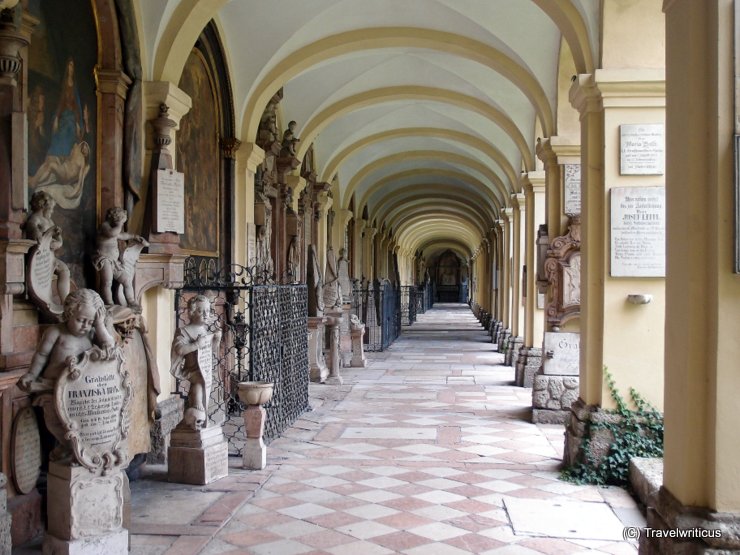
The Sebastian’s Cemetery (Sebastiansfriedhof) dates back to the end of the 16th century. It was built in the style of an Italian campo santo. You find here the graves of Mozart’s widow and Paracelsus, founder of the discipline of toxicology. [German]
A campo santo as a role model
The cemetery saw its construction according to the plans of the Italian architect Andrea Berteleto. The design of a campo santo wasn’t unusual in German-speaking countries at that time. You will still find such cemeteries in Halle (Saxony-Anhalt) or Buttstädt (Thuringia).
The campo santo in Salzburg is a field with an edge length of 90 x 80 metres. An arcade consisting of 87 arches surrounds the area. In the middle of the cemetery, you find a chapel named after St. Gabriel.
Famous people in this graveyard
Probably the most famous grave is the last home of Mozart’s widow. She and several other relatives are buried in a still visible place on the cemetery field. There is also communal grave no. 84 to see, where Mozart’s father was laid down with many other persons.
Speaking in terms of political power, Prince-Archbishop Wolf Dietrich von Raitenau is the most important one, who find his final place on this campo santo. The Gabriel’s Chapel is his mausoleum now.
I looked for the resting place of the Swiss physician, alchemist and philosopher Paracelsus. Finally, I found his tombstone below one of the arches. The inscription was a fascinating read. So I found such old German words as Zipperlein for Gicht (gout).
My take on the Sebastian’s Cemetery
The officials closed the cemetery in 1888. So this burial field is a sort of time capsule. You won’t find any modern attachments. The writings on the tombstones are made in old letters. Besides that, the inscriptions reveal gone titles and the spelling of an older German language.